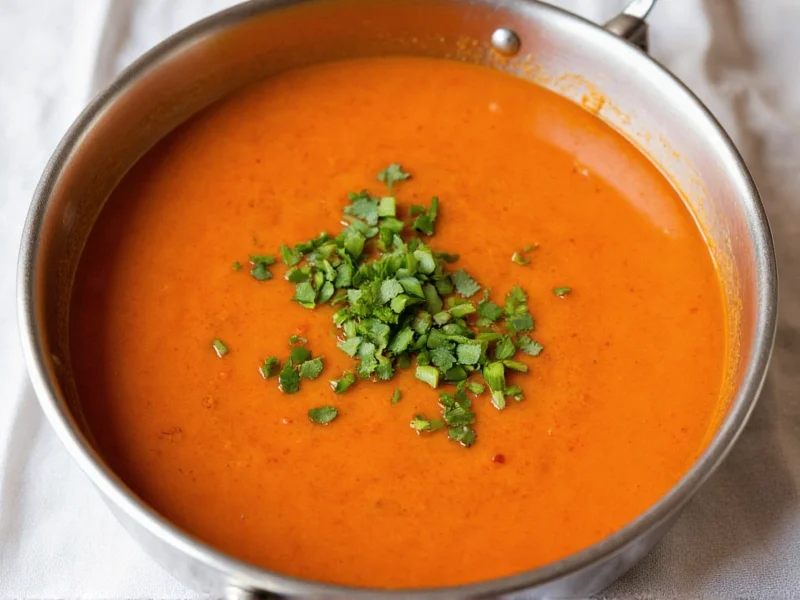When you've accidentally created an overly spicy soup, knowing how to fix it quickly becomes essential. Whether you've added too much cayenne, chili flakes, or hot sauce, several scientifically-backed methods can rescue your dish without compromising its overall flavor. Understanding the chemistry behind spiciness helps you choose the most effective solution for your specific soup type.
The Science Behind Spicy Soup Solutions
Spiciness primarily comes from capsaicin, the compound found in chili peppers that triggers heat receptors. Capsaicin is fat-soluble and pH-sensitive, which explains why certain remedies work better than others. Dairy products contain casein that binds to capsaicin, while acids help neutralize the alkaline properties of capsaicin. Understanding these principles helps you select the most appropriate method for your particular soup.
Most Effective Methods to Reduce Spiciness
Dairy-Based Solutions
Dairy remains the most effective remedy for spicy soup because casein proteins bind to capsaicin molecules. For cream-based soups, simply stir in additional cream or half-and-half. For tomato-based or broth soups, consider these options:
- Stir in plain yogurt or sour cream (1-2 tablespoons at a time)
- Add coconut milk for dairy-free alternative (¼ cup increments)
- Swirl in heavy cream for richer soups
- Top individual servings with cheese like feta or queso fresco
Acidic Counteragents
Acids help neutralize the alkaline nature of capsaicin. Add these gradually while tasting:
- Lemon or lime juice (start with 1 teaspoon)
- Vinegar (apple cider works well for many soups)
- Tomato paste (for non-tomato soups)
- Citrus zest for additional flavor complexity
Dilution Techniques
When you need to preserve the original flavor profile:
- Add unsalted broth or stock (¼ cup at a time)
- Incorporate cooked beans or lentils to absorb heat
- Stir in additional non-spicy vegetables
- Add coconut water for subtle sweetness without dairy
| Method | Best For | Time to Work | Flavor Impact |
|---|---|---|---|
| Dairy (yogurt/cream) | Cream soups, curries | Immediate | Moderate |
| Acid (lemon/vinegar) | Tomato soups, broths | 1-2 minutes | Noticeable |
| Dilution (broth) | All soup types | 5-10 minutes simmering | Minimal |
| Sweet elements | Asian soups, chili | 3-5 minutes simmering | Moderate |
What Not to Do When Fixing Spicy Soup
Avoid these common mistakes that could worsen your situation:
- Don't add more spice - Even "balancing" spices won't reduce actual heat
- Avoid excessive sugar - Can make soup cloying rather than balanced
- Don't just add water - Dilutes flavor without effectively reducing capsaicin
- Don't boil vigorously - Can concentrate flavors and increase perceived heat
Preventing Overly Spicy Soup in the Future
Professional chefs recommend these prevention strategies:
- Add spices incrementally, tasting after each addition
- Toast dried spices first to mellow their heat
- Remove seeds and membranes from fresh chilies (where most capsaicin resides)
- Use a spice scale (Scoville units) when following unfamiliar recipes
- Prepare a separate mild version when serving diverse palates
Soup-Specific Remedies
Different soup bases require tailored approaches:
- Tomato-based soups: Add a small amount of baking soda (⅛ teaspoon) to neutralize acidity that enhances spiciness
- Curry soups: Stir in mango chutney or tamarind paste for authentic flavor balance
- Mexican-style soups: Incorporate avocado or black beans which absorb capsaicin effectively
- Asian broths: Use a touch of mirin or rice vinegar rather than Western vinegars
When All Else Fails: Creative Solutions
If your soup remains too spicy after multiple corrections:
- Transform it into a sauce for proteins or grains
- Freeze portions for future use in small amounts as a flavor booster
- Repurpose as a spicy dipping sauce with additional dairy
- Blend with roasted vegetables to create a new soup entirely
Frequently Asked Questions
Can I use milk instead of cream to reduce spiciness?
Yes, whole milk works effectively as it contains casein that binds to capsaicin. For best results, warm the milk slightly before adding to prevent curdling in acidic soups. Skim milk is less effective than whole milk due to lower fat content, which helps dissolve capsaicin.
How much sugar should I add to tone down spicy soup?
Start with ½ teaspoon of sugar for every 4 cups of soup, then taste and incrementally add more as needed. Brown sugar or honey works better than white sugar for complex soups like chili or curry. Remember that sugar balances heat perception but doesn't eliminate capsaicin, so use it in combination with other methods for best results.
Will adding potatoes really reduce spiciness in soup?
Potatoes can absorb some capsaicin when simmered in soup, but their effect is limited. For noticeable results, add 1-2 diced potatoes and simmer for 15-20 minutes, then remove them before serving. This method works best in hearty soups like chili or stew, but provides only modest heat reduction compared to dairy or acid methods.
Can I fix overly spicy soup without changing the flavor significantly?
Yes, dilution with additional broth or coconut milk offers the least flavor alteration. For every 4 cups of soup, add ½ cup of unsalted broth or light coconut milk. Simmer for 5-10 minutes to integrate flavors. This method preserves the original taste profile better than adding sweet or acidic elements, though it slightly reduces overall flavor intensity.
How long does it take for remedies to reduce spiciness in soup?
Most remedies show immediate effects when properly incorporated. Dairy solutions work within seconds, while acid and sugar methods require 1-2 minutes of simmering to fully integrate. Dilution techniques need 5-10 minutes of gentle simmering. Always allow the soup to sit for 5 minutes after treatment before final tasting, as heat perception continues to mellow slightly off-heat.











 浙公网安备
33010002000092号
浙公网安备
33010002000092号 浙B2-20120091-4
浙B2-20120091-4